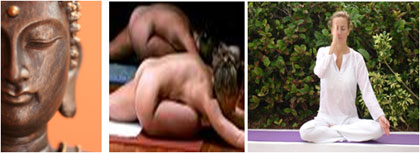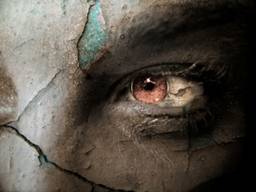What is Ashtanga Yoga?
Ashtanga Yoga comes from the ancient text titled Yoga Korunta by Vamana Rishi. These teachings were passed on to Sri T. Krishmacharya in the 1900’s by his teacher Guru Rama Mohan Brahmachari. Krishmacharya then passed the teachings on to Pattabhi Jois around 1927.
Though somewhat light on meditation, Ashtanga is fast moving and intense, proving to be one of the more physically demanding forms of Yoga. The poses are a set sequence of Asanas, which are synchronized with the breath and always performed in the same order. Students move in a quick, yet natural flow, through a combination of sun salutation poses. These include a standing forward bend, upward dog, downward dog, and other poses such as; standing, seated, backbends, inversions, balancing and twisting poses. The result is continual movement which can improve stamina, strength and flexibility. Ashtanga Yoga was the inspiration for Power Yoga which, though based on the flowing style of Ashtanga, typically does not strictly adhere to the set series of poses.
Ashtanga has become increasingly popular in recent years, particularly among athletes, and it is a good choice for anyone who is in reasonably good physical condition.

The 3 main focuses of Ashtanga Yoga as taught by Pattabhi Jois are:
- Vinyasa: The flow of breath and movement; each movement must include one breath. Standing up involves one breath (inhalation), bending forward involves another breath (exhalation) and so on. Vinyasa has many benefits such as producing an internal cleansing by creating heat which removes toxins and thins the blood for freer circulation throughout the body. The practice of Vinyasa brings the focus inward.
- Tristhana: The three points of focus are breath pattern, dhristi, and posture.
- Breath pattern. Inhalation and exhalation should be equal in length. The locks mula bhanda and uddiyana bhanda should be used. Breathing purifies the nervous system.
- Dhristi. There are nine dhristi are places where you focus the gaze. These include the nose, brow point, navel, thumb, hands, and feet. You also gaze upward, to the right and to the left.
- Posture. This is done through the practice of asanas to strengthen and purify the body.

- The six poisons: The Yoga Shastra claims that God lives in our hearts as light, but it is covered by these poisons. Through discipline and much practice, you can create heat which will burn them. The six poisons are as follows:
- Karma (desire)
- Krodha (anger)
- Moha (delusion)
- Lobha (greed)
- Matsarya (envy)
- Mada (sloth)

Ashtanga Yoga Table of Contents
- What is Ashtanga Yoga?
- Pattabhi Jois
- The Eight Limbs
- Ashtanga yoga mantra
- Ujjayi Breath
- Locks / Bhandas
- Drishti / Gaze
- Vinyasa
- Surya Namaskara / Sun Salutation
- Standing poses
- Padangusthasana
- Padahastasana
- Utthita Trikonasana
- Parivritta Trikonasana
- Utthita Parsvakonasana
- Parivritta Parsvakonasana
- Prasarita Padottanasana A
- Prasarita Padottanasana B
- Prasarita Padottanasana C
- Prasarita Padottanasana D
- Parsvottanasana
- Utthita Hasta Padangusthasana A
- Utthita Hasta Padangusthasana B
- Utthita Hasta Padangusthasana C
- Utthita Hasta Padangusthasana D
- Ardha Baddha Padmottanasana
- Utkatasana
- Virabhadrasana A
- Virabhadrasana B
- Primary Series
- Dandasana
- Paschimottanasana A
- Paschimottanasana B
- Paschimottanasana C
- Purvottanasana
- Ardha Baddha Padma Paschimottanasana
- Trianga Mukhaikapada paschimottanasana
- Janu Sirsasana A
- Janu Sirsasana B
- Janu Sirsasana C
- Marichyasana A
- Marichyasana B
- Marichyasana C
- Marichyasana D
- Navasana (5 times)
- Bhujapidasana
- Kurmasana
- Supta Kurmasana
- Garbha Pindasana
- Kukktasana
- Baddha Konasana A
- Baddha Konasana B
- Upavishta Konasana A
- Upavishta Konasana B
- Supta Konasana
- Supta Padangusthasana A
- Supta Padangusthasana B
- Supta Padangusthasana C
- Ubhaya Padangusthasana
- Urdhva Mukha Paschimottanasana
- Setu Bandhasana
- Intermediate Series
- Finishing Series
- Poster To Go
